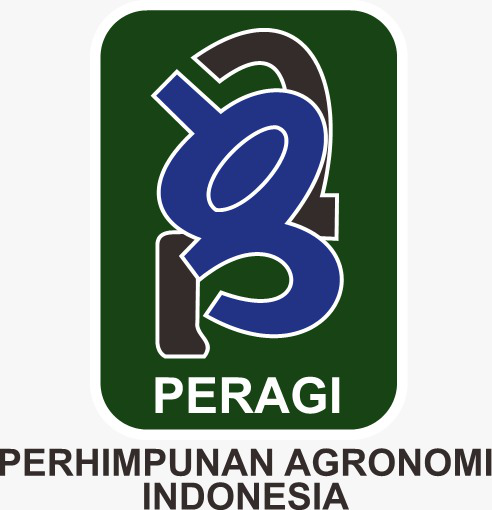Mutation Strategy of Gamma Ray Irradiation for Increasing the Growth of Rose Tomato Plants (Solanum lycopersicum var. Rose)
Abstract
Rose tomatoes, scientifically known as Solanum lycopersicum var. Roses are a type of tomato characterized by its small, vibrant red fruits. Gamma rays, a form of electromagnetic radiation with a very short wavelength and high energy, can cause plant mutations, leading to genetic variations that could potentially enhance the quality and quantity of crops. This study aimed to investigate the impact of gamma-ray irradiation on the growth of rose tomatoes. The research was conducted at the Irradiation and Instrumentation Laboratory on Jalan Lebak Bulus Raya, Jakarta, and the Green House of Labuhanbatu University, Rantauprapat City, Labuhanbatu Regency, North Sumatra Province. The experiment took place from December 2023 to March 2024. utilizing a single factor Completely Randomized Design with 4 levels and 5 replications, precisely gamma-ray radiation doses of 0 Gy, 100 Gy, 200 Gy, and 300 Gy. The findings revealed that the highest germination parameters were observed at a dose of 300 Gy, while the control treatment exhibited the lowest germination. However, the gamma irradiation treatment did not significantly impact plant height and the number of leaves.Downloads
References
Cardellicchio, A., Solimani, F., Dimauro, G., Petrozza, A., Summerer, S., Cellini, F., & Renò, V. (2023). Detection of tomato plant phenotyping traits using YOLOv5-based single stage detectors. Computers and Electronics in Agriculture, 207(March), 107757. https://doi.org/10.1016/j.compag.2023.107757
Gusti, E. (2019). Penyambungan Tomat Servo dengan Batang Bawah Varietas Mawar dan Aplikasi Bakteriofag untuk Pengendalian Penyakit Layu Bakteri (Ralstonia solanacearum). 381301.
Haris, J., Meliala, S., Basuki, N., Seogianto, A., Pertanian, J. B., & Pertanian, F. (2016). The Effect Of Gamma Irradiation On Phenotypic Changing In Upland Rice Plants (Oryza sativa L.). Jurnal Produksi Tanaman, 4(7), 585–594.
Hasdar, M., Wadli, W., & Meilani, D. (2021). Rancangan Acak Lengkap Dan Rancangan Acak Kelompok Pada pH Gelatin Kulit Domba Dengan Pretreatment Larutan NaOH. Journal of Technology and Food Processing (JTFP), 1(01), 17–23. https://doi.org/10.46772/jtfp.v1i01.338
Insani, P. P., & Anwar, S. (2022). Radiosensitivitas dan Pengaruh Radiasi Sinar Gamma terhadap Pertumbuhan dan Produksi Tomat ( Solanum lycopersicum L . ) Radiosensitivity and Effect of Gamma Radiation Dose on Growth and Production of Tomato ( Solanum lycopersicum L .). 1(1).
Manurung, B., & Gultom, T. (2018). Karateristik Buah Tomat (Solanum Sp) Liar Generasi M1 Yang Di Radiasi Sinar Gamma Co-60. Seminar Nasional Biologi Dan Pembelajarannya, 1–13.
Nur Alfiah, L., Abdilah Siregar, K., & Novianto, E. (2023). Increasing the growth and yield of tomato plants (Lycopersicum Esculentum Mill) by Applying Palm Oil Compost. Jurnal Agronomi Tanaman Tropika (Juatika), 5(2), 330–338. https://doi.org/10.36378/juatika.v5i2.3062
Oktaviani, M. (2020). Pengaruh Radiasi Sinar Gamma Co-60 Terhadap Respon Morfologi Dan Kadar Protein Kacang Hijau (Vigna Radiata L.). In Tesis.
Prosky, L., Asp, N. G., & Furda, I. (1984). Determinaton of total dietary fiber in foods, food products, and total diets: Interlaboratory study. Journal of the Association of Official Analytical Chemists, 67(6), 1044–1052. https://doi.org/10.1093/jaoac/67.6.1044
Sri, F., Sugianto, A., & Sunawan, S. (2022). Pengaruh Pemberian Pembenah Tanah dan Pupuk NPK terhadap Pertumbuhan dan Hasil Tanaman Tomat ( Lycopersicum esculentum ) Varietas Mawar . 6(1), 1–10.
Xie, D., & Yan, W. (2023). A study of N = 1 SCFT derived from N = 2 SCFT: index and chiral ring. Journal of High Energy Physics, 2023(3), 1–5. https://doi.org/10.1007/JHEP03(2023)201
Yanti, F., & Rasyad, A. (2020). Analisis Keragaman Fenotipe Generasi M 2 Dan M 3 Tanaman Kacang Hijau ( Vigna radiata L .) Hasil Radiasi Sinar Gamma Mahasiswa Program Pascasarjana , Fakultas Pertanian , Universitas Riau , Jurusan Agroteknologi , Fakultas Pertanian , Universitas Riau Jur. 31–45.
Copyright (c) 2024 Verdy Anggriansyah, Hilwa Walida, Dini Hariyati Adam

This work is licensed under a Creative Commons Attribution 4.0 International License.
Authors who publish with Jurnal Agronomi Tanaman Tropika (JUATIKA) agree to the following terms:
Authors retain copyright and grant the Jurnal Agronomi Tanaman Tropika (JUATIKA) right of first publication with the work simultaneously licensed under a Creative Commons Attribution License (CC BY 4.0) that allows others to share (copy and redistribute the material in any medium or format) and adapt (remix, transform, and build upon the material for any purpose, even commercially) with an acknowledgment of the work's authorship and initial publication in Jurnal Agronomi Tanaman Tropika (JUATIKA).
Authors are able to enter into separate, additional contractual arrangements for the non-exclusive distribution of the journal's published version of the work (e.g., post it to an institutional repository or publish it in a book), with an acknowledgment of its initial publication in Jurnal Agronomi Tanaman Tropika (JUATIKA). Authors are permitted and encouraged to post their work online (e.g., in institutional repositories or on their website) prior to and during the submission process, as it can lead to productive exchanges, as well as earlier and greater citation of published work.







 More Information
More Information



